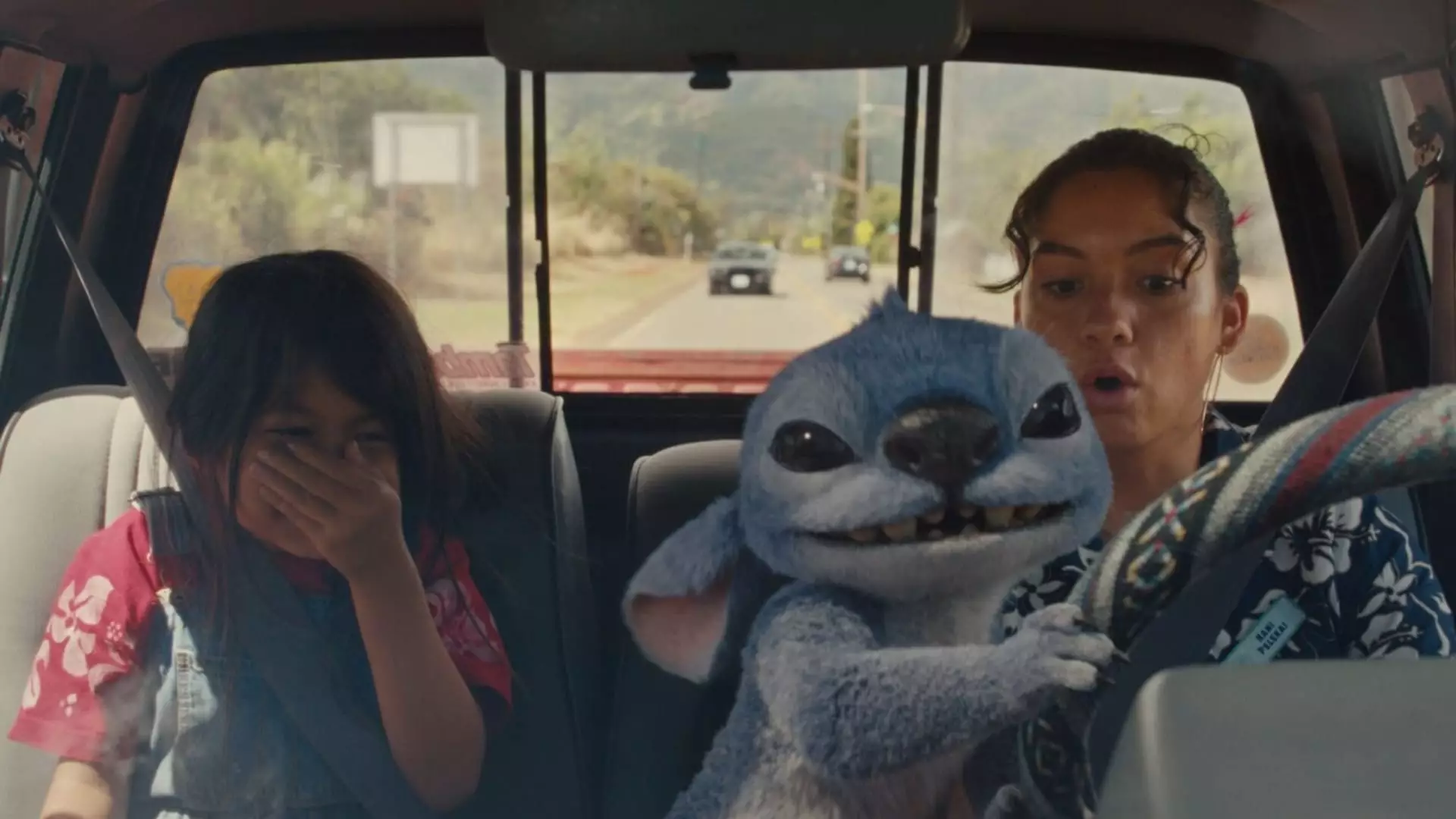The undeniable rebound of the movie theater industry has left critics and fans alike buzzing with excitement. On a pivotal Tuesday, shares of major cinema chains experienced a staggering uptick, signaling a possible renaissance for the beleaguered film sector. The epicenter of this financial surge stemmed from a record-setting Memorial Day weekend, where the domestic box office raked in a jaw-dropping $326 million, a figure that is not only historic but also serves as testament to the industry’s fervent recovery.
AMC Theatres led the charge, experiencing a remarkable 20% increase in stock value, while Marcus Theatres and Cinemark also reaped the benefits. Industry analysts have been quick to credit a strategic combination of highly anticipated releases and strong holdover films. Disney’s live-action “Lilo & Stitch” and Paramount’s “Mission Impossible — The Final Reckoning” captivated audiences and pushed ticket sales to unprecedented heights. The juxtaposition of these blockbuster hits with existing popular films created a synergy that many in the industry clamored for as a lifeline.
Factors Behind the Box Office Boom
It’s fascinating to observe how the stars aligned for this year’s Memorial Day weekend. Analysts, such as Shawn Robbins from Fandango, have aptly noted, “Everything came together at the right time.” The diverse offering of films brought together a range of demographics, demonstrating how cinema can unite rather than divide. The resurgence speaks volumes about the crucial role that narrative storytelling plays in society—artistry that resonates deeply amidst an atmosphere of chaos and uncertainty.
This year’s box office figures have outperformed last year’s number by an astonishing 245%, revealing a renewed public appetite for cinematic experiences. It is important to recognize that this isn’t merely a fluke; rather, it represents a deliberate shift in consumer behavior. Audiences are once again embracing the theater experience, valuing its unique ability to foster community and shared experiences, especially in a post-pandemic world.
The Importance of Quality Content
A critical element underlying this sudden surge lies in the quality of films being released. The balance of sequels, franchises, and fresh stories tailors to both the die-hard fans and casual viewers alike. The opening weekend numbers for “Lilo & Stitch” alone reached $183 million—an impressive feat indicative of the nostalgia-driven audience’s expectations. The eighth installment of “Mission Impossible” also drew in a significant $77 million. What can be gleaned from this is that audiences are hungry for both reliable franchises and inventive storytelling, revealing the complex landscape of modern cinema.
Perhaps equally important is the acknowledgment from leaders within the industry. Adam Aron, AMC’s CEO, declared hopes for a revitalized future, suggesting that the elements have aligned favorably for the first time in years. It is not just a financial recovery they are witnessing but also a resurgence of cultural significance, reinforcing the idea that cinema continues to hold relevance in our technologically saturated world.
Looking Ahead: Sustainable Success or Fleeting Moment?
The record-breaking weekend begs the question of sustainability. Will this rapid resurgence turn out to be a short-lived spike or the beginning of a longer arc of triumph? The performances of the recent weekend bode well for a summer filled with cinematic offerings that could potentially exceed $4 billion in ticket sales. However, optimism must be tempered by an awareness that the film industry is an unpredictable beast, constantly oscillating between highs and lows based on audience sentiment and economic factors.
Furthermore, external pressures such as streaming services will continue to loom large over the theatrical experience. The dual existence of traditional cinema and digital platforms necessitates that filmmakers adapt to new storytelling paradigms. For the theaters to maintain this momentum, they must work collaboratively with studios, ensuring that the offerings are not only abundant but also extraordinary.
Ultimately, while the box office has regained its spark, the overarching question remains: Can cinema evolve without compromising its essence, and continue to flourish in an era dominated by pixels on small screens? The Memorial Day weekend offers a glimpse into a brighter future, but it is up to industry stakeholders to nurture and sustain the spirit that drove audiences back into theater seats. The show must go on, but let it be a show that captivates hearts and minds in ways that only cinema can.

